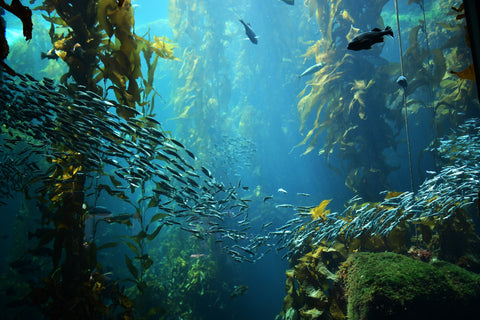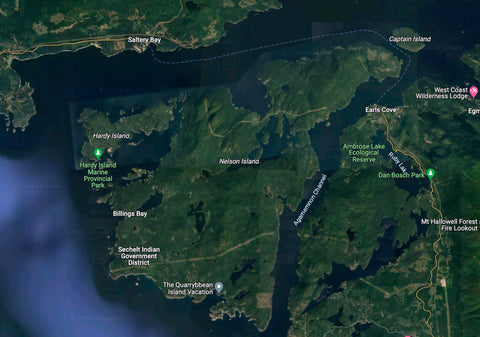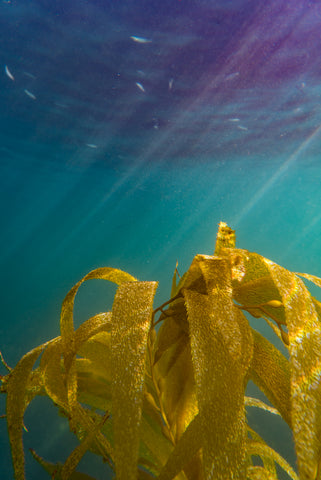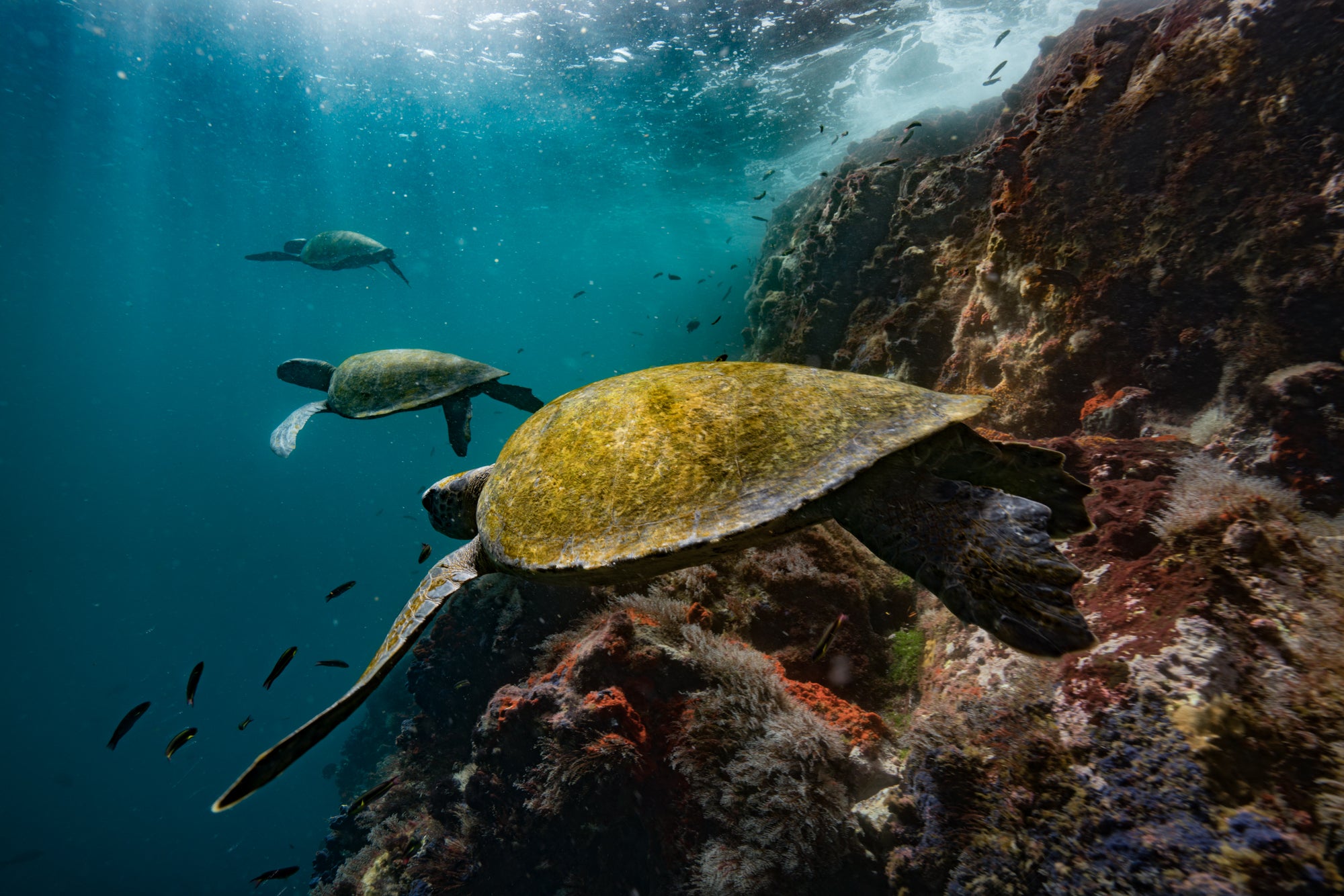Seaforestation: Planting Kelp for Every Seatopia Order
Kelp Reforestation Initiatives Help Rebuild Ocean Habitat and Offset Ocean Acidification


For every Seatopia order, we invest a portion of the proceeds to support the Seaforestation initiative planting kelp in key wild fish spawning areas along the Eastern Pacific. This means that every purchase you make helps to support the restoration of degraded marine ecosystems and sequester carbon from the atmosphere.
What is Seaforestation?
Seaforestation is a kelp reforestation initiative led by Ocean Wise, a non-profit organization dedicated to protecting and restoring our oceans. The project aims to restore degraded marine ecosystems and sequester carbon by planting kelp forests along the coastlines of British Columbia, Canada.

The Importance of Kelp Forests: Seeding Canopies for Marine Species
We are currently aiming to grow 5000m of kelp seeded line (500,000 spores) on a permitted aquaculture lease in Moon Bay, Nelson Island.

The species of kelp being planted include; bull kelp (nereocystis luetkeana), sugar kelp (saccharina latissima), Alaria marginata. Kelp forests are three-dimensional underwater habitats made up of many different species of kelp that form canopies over the seafloor. Kelp forests thrive in cool, nutrient-rich waters along rocky coastlines in the Pacific, Atlantic, and Arctic Oceans. These towering underwater forests harbour thousands of marine species, providing food and shelter, much like forests on land.

Restoring Kelp Forests for Fish Habitat
The kelp lines will be habitat for herring and salmonids that swim the Agamemnon Channel (Sunshine Coast, BC Canada) on the territory of the shíshálh people.

Kelp forests are three-dimensional underwater habitats made up of many different species of kelp that form canopies over the seafloor. Kelp forests thrive in cool, nutrient-rich waters along rocky coastlines in the Pacific, Atlantic, and Arctic Oceans. These towering underwater forests harbor thousands of marine species, providing food and shelter, much like forests on land. Kelp forests are a vital component of healthy marine ecosystems, providing habitats for a wide range of marine species, from fish and shellfish to seals and sea otters. They also help to sequester carbon dioxide from the atmosphere, reducing the impact of ocean acidification and climate change.
Our Partnership with Seaforestation

At SEATOPIA, we're committed to building a regenerative seafood supply chain that supports sustainable and responsible aquaculture practices. Through our partnership with OceanWise Seaforestation, we're able to support kelp reforestation efforts to help rebuild marine habitats with every Seatopia order.

By supporting Seatopia, you're also helping to create a market-based solution that will scale sustainable aquaculture practices and regenerative ocean ecosystems, to create a more sustainable future for our oceans and the seafood industry as a whole.
Join Us in Building a Regenerative Seafood Supply Chain
We believe that businesses have a responsibility to operate in a sustainable and environmentally responsible manner. By partnering with Seaforestation, we're able to take a tangible step towards building a regenerative seafood supply chain and supporting the restoration of our oceans.
Join us in this important mission by placing a Seatopia order today. Together, we can create a more sustainable future for our oceans and the seafood industry.
Studies have shown that at least 26% of our oceans need urgent conservation attention to preserve Earth’s marine biodiversity. Currently, one-third of all marine species have less than 10% of their range covered by protected areas.
MPAs involve the protective management of natural areas according to pre-defined management objectives and come in a variety of configurations and are established, maintained, and managed by all levels of the government. There are ocean parks, wildlife refuges, research facilities, and marine sanctuaries all focused on protected areas of seas, oceans, estuaries, and other marine environments. MPAs may be set up to protect ecosystems, sustain fisheries production, biodiversity conservation, species protection or preserve cultural resources (i.e. archaeological sites). They are created by delineating zones with permitted and non-permitted uses within that zone. It is vital to have the support of the public and established techniques for surveillance and monitoring of compliance. SEATOPIA engages in advocating for the expansion of the MPA network and its management through reliable science and by engaging with local stakeholders.
With overfishing as an indisputable pressure on the worlds oceans, we need to use a broad range of strategies such as no-fishing zones, eco-tourism, community marine reserves, and broad-scale policies to put an end to illegal and unsustainable commercial fishing operations. On a parallel track SEATOPIA is doing our part by working only with "smart aquaculture farms" focused on humane and sustainable practices. Supporting artisan aquaculturists who resisted the temptations of industrial-scale feed-lot operations, to instead focus on low-density open farms, antibiotic-free operations, innovative algae-based feeds and multi-trophic marine-permaculture systems, we are directly mitigating pressure on wild stock populations. We are paving the way for a new model of working symbiotically with the oceans as traditional models of simply extracting from the oceans.
In tandem, we believe that investing at least 1% of sales into ocean conservation projects is essential. Millions of people around the blue planet depend on marine biodiversity as a crucial source of food and income. It's our passion and mission to ensure these ecosystems are protected and helping to create more well managed MPAs. Your subscription to the Seatopia Collective will supports these projects, and in turn, help advance ocean conservation for generations to come.

At SEATOPIA, we believe that regeneration should be at the heart of the seafood industry. Join us in helping build a truly regenerative seafood supply chain by subscribing today: Order Seatopia.
When you subscribe to Seatopia you are supporting artisan aquaculture and helping restore our oceans:


